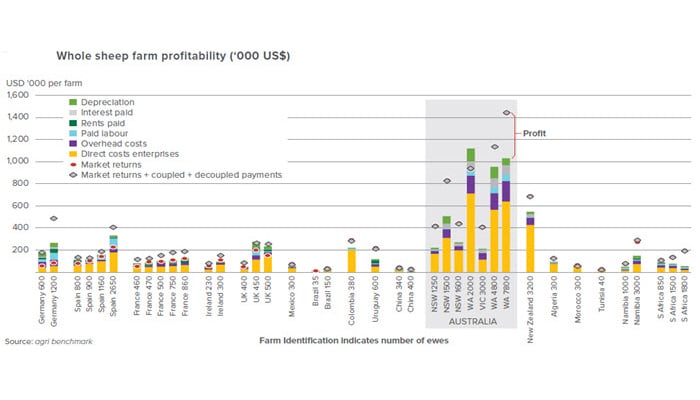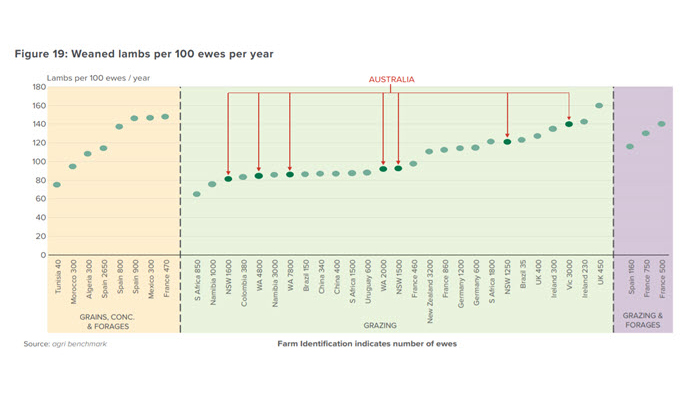Are Australian sheep producers globally competitive? The latest agri benchmark global network results offer an insight into sheep production systems in Australia and around the world.
A recent report commissioned by MLA in conjunction with the global agri benchmark network examines 2017 sheep production in Australia, as well as some of our largest global competitors. Instead of analysing industry averages, the approach taken by agri benchmark is to select enterprises that are indicative of the spectrum of production systems within a country. In Australia, data is collected for seven typical sheep farms across NSW, Victoria and WA.
This process highlighted a number of comparative advantages enjoyed by Australian producers in terms of efficiency, cost of production, and ultimately, profitability.
Key points
- The profitability of sheep flocks around the world from 2011 to 2017 was generally positive in the short- to medium-term (better than for beef cattle).
- However, many countries are not currently profitable long-term, even with significant government payments. The exceptions to this are some systems in Australia, Africa, Uruguay, New Zealand and China.
- Australian and New Zealand typical sheep farms are the largest by global standards, having from two to eight times higher total returns (revenue) from the business compared to global competitors. Australian sheep systems are also more diversified in comparison to the rest of the world, with wool and cropping being major sources of additional income. The majority of Australian systems are in mixed farming zones, representing areas of highest sheep production and flock sizes.
- The factors listed above mean that on a whole farm profit basis, Australia’s ‘typical’ sheep farms were the most profitable (in US dollar terms – see graph below), predominantly due to their scale and incomes received from other enterprises, such as crops and beef.
- Australian sheep production systems tend to produce the heaviest lambs globally, especially within grazing-based production systems. The ranking within Australian systems changes somewhat between years in response to seasonal conditions, through both changes in growth rates and in the economic benefit of adding additional weight to slaughter lambs.
- European farms tend to have higher weaning rates than Australian farms, primarily due to more prolific breeds in addition to nutrition (supplementary feeding) or, as occurs in France and Spain, multiple lambings a year. Australian farms tend to maintain similar weaning rates to more rangeland or less-developed production systems where nutrition, mortalities and/or genetics may be constraints (see graph below).
- This more than likely presents the area of greatest opportunity for Australian production systems, depending on the cost-effectiveness of increasing weaning rates. Flocks from higher rainfall regions (Victoria = 3,000 in western Victoria) or flocks designed for lamb production (NSW-1250) achieve comparable weaning rates to the representative European and New Zealand systems.
- Lamb growth rates on typical Australian farms vary significantly, though Australian systems generally maintain above average growth rates for animals being sold or slaughtered at weaning – comparable to most global regions, including Europe and New Zealand.
- Australian sheep systems have high labour costs, but excellent labour productivity which makes Australia competitive in terms of labour costs per amount produced.


More information
- Full report: 🖺 How are global and Australian sheep producers performing?
SUPPLY CHAINEXPORTSPRODUCTION INTEGRITYPRODUCTION TRADE & STATISTICS
Article Date: 5th April 2019